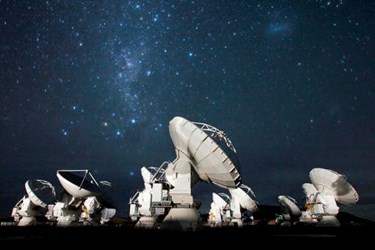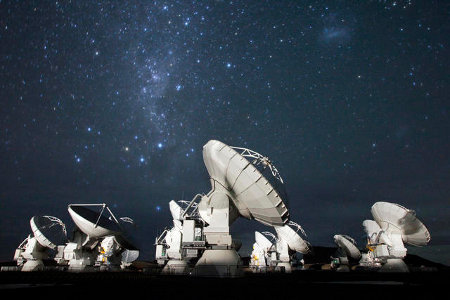IMS2013: Tech Trends You Don't Want To Miss (Even If You're Not Going)
By Jim Pomager, Executive Editor

The IEEE MTT-S International Microwave Symposium (IMS) technical program always offers a cornucopia of sessions, workshops, courses, competitions, and other means to learn about the latest technologies, techniques, and applications in RF/microwave design. Like a restaurant with way too many appealing choices on its menu (Have you seen the 150-page program book??), IMS poses a particular dilemma, at least for indecisive attendees like me: With so many educational opportunities available over such a short period of time, which ones should you attend? The question is similar for those who don’t/can’t make it to IMS: With so much information coming out of the symposium in the days and weeks that follow, what’s worth paying attention to or investigating further?
Since IMS is fast approaching — and my schedule is yet to be completed — I posed these and other questions to no less an authority than IMS2013’s Technical Program Committee chair (and long-time IMS veteran), Leonard Hayden. He headed up the Technical Paper Review Committee (TPRC), the 270 experts (broken into 40 subcommittees) responsible for reviewing 900+ paper submissions and workshop/short course proposals, and determining which were of the highest quality, the greatest technical merit, and the most industry significance. Hayden’s responses to my questions, I think, provide a nice selection of choices from the IMS2013 menu and identify emerging areas of interest and opportunity in the RF/microwave (and beyond) design field.
Stealing The Show? Atacama Large Millimeter/Submillimeter Array (ALMA)
When I asked Hayden what he’s most looking forward to about the IMS2013 technical program, his response was unequivocal: talks related to the Atacama Large Millimeter/submillimeter Array (ALMA), the huge radio telescope farm perched high in the Atacama desert of northern Chile. The largest and most expensive astronomical project in the world, ALMA is offering unprecedented views of the universe — providing details on the birth of stars, the formation of planets, and the distribution of molecules necessary for life. The $1.4-billion array is loaded with cutting-edge RF/microwave technology, from its 66 giant high-precision antennas that can be repositioned as far as 16 km apart, to a front-end system that receives signals in 10 different frequency bands, to a back-end system and correlator that contains some 3000 printed circuit boards. “It’s one of those projects where, the more you learn about it, the more you go ‘wow’,” Hayden said.

The Atacama Large Millimeter/Submillimeter Array (Image courtesy of ALMA)
On Tuesday, June 4, IMS2013 will host a special session dedicated to the advanced high-frequency and optoelectronic components and systems that make ALMA’s work possible. Presentations will be given by various North American technical contributors, primarily from the National Radio Astronomy Observatory (NRAO), one of the organizations that run ALMA. (ALMA is an international partnership among East Asia, Europe, and North America, in cooperation with the Republic of Chile.)
Complementing these technical talks will be a Closing Ceremony keynote presentation given by Michael Thorburn, head of ALMA’s Department of Engineering and Joint ALMA Observatory project manager (and Hayden’s grad school classmate), on Thursday, June 6. “These are ‘don’t-miss’ kinds of sessions,” Hayden explained. “They will go way beyond the PBS documentary on the project, giving you more of the engineer’s viewpoint, rather than just the science.”
Wireless Technology (Particularly PAs) Remains Hot
According to Hayden, the TPRC received more paper submissions on wireless design, especially wireless power amplifiers (PAs), than on any other topic. “Power amplifier design is an area that’s significant to IMS,” he said. “Our review subcommittee on the topic had to be split because we had more submissions than could be covered by one group.” Wireless-related talks can be found throughout the technical program. Of note, a panel session called Dominant PA Architectures for Tomorrow’s High Speed Cellular Networks will be held at noon on Wednesday, June 5, and a workshop on High Efficiency Supply-Modulated RF Power Amplifiers will take place on Sunday, June 2. Also, the other Closing Ceremony keynote presentation, Wireless to the Rescue, will be given by Microsoft VP David Tennenhouse on Thursday.
On a related topic, one of the unique features of IMS2013 is the designation of Wednesday as Wireless Industry Day. The full-day seminar will highlight emerging wireless technologies in the Pacific Northwest, with sessions led by experts from Verizon, AT&T Boeing, Intel, and other organizations.
Terahertz Technology And Other Emerging Technical Areas
One rising star of the IMS technical program is terahertz technology, Hayden told me. “There is a lot of interest on the leading edge, and funding out there for devices and circuits working in the hundreds of GHz range to the 1+ THz range.” As with wireless PAs, there were so many paper submissions on terahertz (and millimeter-wave) technologies that the subcommittee had to be split in two, and there were so many TPRC volunteers for the subcommittee that some were turned away. Some noteworthy sessions on the topic include: a focus session on Advances in Graphene RF and THz Nanoelectronics on Thursday and a workshop on Technologies for THZ Integrated Systems on Sunday.
Other emerging technical areas Hayden pointed out include:
- Energy transmission, harvesting, and scavenging (see Architectures for Energy Harvesting and Wireless Powering Transmission and Advances in RF Energy Scavenging)
- Inkjet printed RF circuits (see Advances in RF and Inkjet Printed Circuit Technologies)
- Biomedical applications for RF technology (see RF and Microwave Biomedical Devices and Systems and Advanced Concepts in Biomedical Radars
Obviously, this is just a small sampling of what looks to be a really strong and diverse technical program that Hayden and the rest of Technical Program Committee put together this year. Whether or not you plan to attend the event, I encourage you to review the program book and identify the sessions that are most applicable to your interests or specific line of work. If you are going, Hayden offers some sound advice on approaching the technical program: “Attend a talk on a topic you’re not familiar with — it could give you a unique perspective on your own work that being too close to it prevented you from having. You can learn from good work in any field, and apply that knowledge in your own field.” If you’re not going, why not contact an author directly for additional information? Plus, you can follow RF Globalnet’s ongoing coverage of the event through our email newsletter (sign up at http://www.rfglobalnet.com/solution/ims2013) and our IMS2013 Resource Center.
